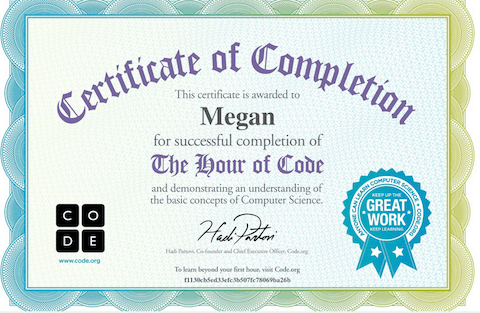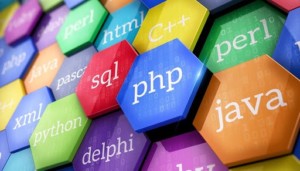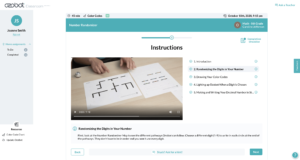My Hour of Code

No surprise here, but I think one of the coolest things about being a teacher today, is how technology increases student access to knowledge. There is a sense of freedom that comes from not having to know it all. Coding is a perfect example of what I do NOT know. I no longer have a classroom of my own, but the Hour of Code would have been the perfect opportunity to show my students the process of learning through my own vulnerability.
My Hour of Code started at code.org where I was quickly prompted with several options of how to spend my next 60 minutes. After a bit of browsing I went with option #1 “Learn about the basic concepts of Computer Science with drag and drop programming. This game-like, self directed tutorial stars video lectures by Bill Gates, Mark Zuckerberg, Angry Birds and Plants vs Zombies. Learn repeat-loops, conditionals, and basic algorithms.” They had me at “drag and drop.” Being a beginning beginner, I thought learning from the big wigs was definitely the way to go.
A short introduction video (less than 3 minutes) gave instructions on how I would use Blockly to tackle this “drag and drop” process of coding. My motivation was set (getting the Angry Bird through a maze to get the evil pig that stole its eggs) and so I began. All this coder had to do was think through basic step by step instructions and tell the computer what I wanted the Angry Bird to do, but putting the Blockly instruction blocks in the correct order.
Coding using Blockly almost seemed too good to be true, but with more practice came more challenges: “You did it, BUT you could have used fewer blocks.” The game like lesson had me completely entertained for the full hour and even had me out of my seat as I re-enacted the angry birds path to make sure I coded correctly on the first try.
About half way through the hour, the challenges increased and the goal changed. Now, I was trying to help a hungry zombie eat a sunflower – I didn’t know that zombies ate sunflowers, but I was way too busy coding to be caught up in the details.
While it would be ideal to have coding as a requirement in American schools, at minimum it should be introduced into every student’s math instruction. Being the math geek that I am, I was continually struck by the ways that coding could seamlessly fit into a traditional math class. In basic math we work on strategic problem solving, finding patterns, and building sequences. In Algebra you could connect to order of operations and solving for unknowns. Even a Geometry teacher would find value in the practical use of conditional (if-then) statements. Why not begin a unit with an Hour of Code and end it asking students to make and explain the connections between coding and content? I think we would all be impressed by what they come up with!
The usability was just one of many things that I loved about my Hour of Code. The lesson included student choice and chunked information into digestible amounts. I was challenged and engaged, while being provided constant and immediate feedback. And the best part, I was left wanting to know and do more.
At the end of my hour, I was assured that the basic concepts I learned were pretty much the core of any program or app I would ever want to write. I was given the opportunity to brag through social media that I had dominated (or maybe just completed) my #hourofcode, and I was even emailed a certificate of completion. In celebration of Computer Science Education Week, code.org is encouraging everyone to do just one hour of code. Have you done yours yet? The week isn’t over, so get coding!






Compass Learning
This is AWESOME! Can't wait to try.